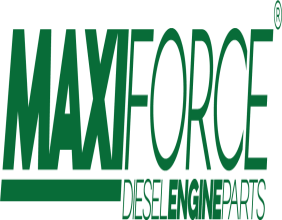Highlights:
- Bitcoin and Ether have significant differences despite both being major cryptocurrencies.
- XRP continues to hold a significant position in the cryptocurrency market.
- Cryptocurrencies like Bitcoin and Ether offer varied use cases in the financial landscape.
The cryptocurrency market is one of the most dynamic sectors within the digital finance landscape. Bitcoin, Ether, and XRP are three of the largest digital currencies by market share. These cryptocurrencies are built on blockchain technology, which ensures decentralized control, providing transparency and security. Each of these digital assets is used in different ways, contributing to their varying levels of adoption and market activity.
Bitcoin: The First and Most Recognized Cryptocurrency
Bitcoin is the pioneering cryptocurrency, created to act as a decentralized medium of exchange. Launched in the early two-thousands, it was designed to function without the need for a central authority. Bitcoin relies on a proof-of-work consensus mechanism, which requires participants to solve complex cryptographic problems to validate transactions. This process, known as mining, helps secure the Bitcoin network and create new units of the currency.
Bitcoin’s popularity and recognition stem from its status as the first cryptocurrency. Over time, it has developed into a widely recognized digital asset and is often viewed as a store of value or a "digital gold." Bitcoin’s limited supply, capped at a certain number of coins, further differentiates it from other cryptocurrencies.
Ether: More Than a Digital Currency
Ether, the native cryptocurrency of the Ethereum network, shares similarities with Bitcoin but also has foundational differences. Ethereum is more than just a payment system; it is a decentralized platform designed for building smart contracts and decentralized applications (dApps). Ether is used as the "fuel" for these applications, paying for the computational power required to run decentralized programs on the Ethereum blockchain.
Unlike Bitcoin, which uses proof-of-work, Ethereum has made the transition to a proof-of-stake model. This new consensus mechanism aims to increase network efficiency while reducing energy consumption. Ethereum’s ability to support a range of decentralized applications has made it one of the most versatile blockchain platforms, fostering an ecosystem of financial services, gaming, and decentralized finance (DeFi) projects.
XRP: A Cryptocurrency Focused on Payment Systems
XRP, created by Ripple Labs, was designed with a specific purpose: to facilitate fast and low-cost cross-border payments. While Bitcoin and Ether focus more on decentralized networks, XRP aims to enhance the global financial infrastructure. Its primary use case is within financial institutions for remittances and international money transfers, offering a solution that is faster and more affordable compared to traditional banking methods.
XRP operates on a unique consensus algorithm, different from both Bitcoin’s proof-of-work and Ethereum’s proof-of-stake. It relies on a network of trusted nodes to validate transactions, allowing for faster processing times and lower transaction fees. XRP’s centralization is one of the reasons it differs from Bitcoin and Ether, as Ripple Labs controls a significant portion of the currency supply.
Key Differences in Blockchain Technology and Use Cases
Bitcoin, Ether, and XRP are built on distinct blockchain architectures that cater to different goals. Bitcoin’s primary purpose is to serve as a peer-to-peer electronic cash system. Ethereum, while functioning as a digital currency, also offers robust support for decentralized applications, positioning itself as a leading platform for blockchain-based innovation. XRP focuses on optimizing financial transactions, particularly in the realm of international payments, by reducing both time and costs compared to traditional financial systems.
The use cases for these three cryptocurrencies further set them apart. Bitcoin continues to be a store of value, often sought after for its security and scarcity. Ether, on the other hand, has become a cornerstone of decentralized finance, powering a wide range of applications. XRP remains focused on revolutionizing global payments, offering an alternative to traditional banking systems and remittance services.
Bitcoin, Ether, and XRP each serve different roles within the broader cryptocurrency market. Whether as a store of value, a platform for decentralized applications, or a tool for international payments, these digital currencies showcase the diverse use cases that blockchain technology enables. Understanding these distinctions can help individuals better grasp the impact of each on the evolving financial landscape.
_02_13_2025_06_53_45_966407.jpg)



